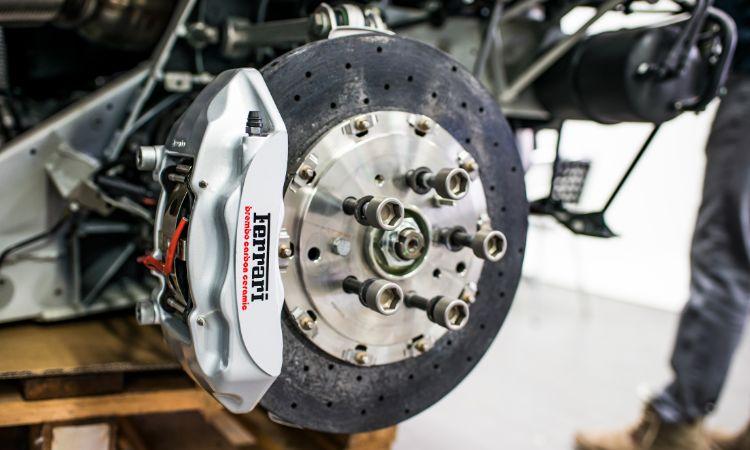The global automotive industry is witnessing a transformative shift towards sustainable and environmentally friendly solutions. One of the key innovations contributing to this shift is regenerative braking systems. These systems play a crucial role in enhancing the efficiency and performance of electric and hybrid vehicles. As the world strives to reduce carbon emissions and transition towards cleaner transportation, regenerative braking is becoming increasingly significant. In fact, the global automotive regenerative braking system market size is estimated to grow at a CAGR of 15.10% in the forecast period of 2024-2032, according to recent market research.
In this blog post, we will delve into the world of regenerative braking, exploring its principles, and shedding light on the multitude of benefits it offers to electric and hybrid vehicles. From improved energy efficiency to environmental advantages, regenerative braking is paving the way for a more sustainable future in the automotive industry.
Understanding Regenerative Braking: Before we dive into the benefits, it’s essential to understand the concept of regenerative braking and how it differs from traditional friction braking.
Regenerative braking is a technology that allows electric and hybrid vehicles to recover and store the kinetic energy generated during braking. In a nutshell, it converts the vehicle’s kinetic energy into electrical energy and stores it in the onboard battery for later use. Unlike traditional friction brakes, which dissipate energy as heat, regenerative braking harnesses this energy, making the entire braking process far more efficient.
Benefits of Regenerative Braking:
I. Improved Energy Efficiency:
- Regenerative braking captures and stores energy that would otherwise be wasted as heat, significantly improving energy efficiency.
- This reclaimed energy is then used to power the vehicle’s electric components, reducing the overall load on the battery and extending its life.
II. Extended Range for Electric Vehicles:
- Regenerative braking has a profound impact on the range of electric vehicles (EVs).
- By using the recovered energy for propulsion, EVs can travel longer distances on a single charge.
- Real-world data shows that regenerative braking can extend the range of electric vehicles by up to 20%.
III. Reduced Brake Wear and Maintenance:
- Traditional friction brakes generate a significant amount of heat during braking, leading to wear and tear.
- In contrast, regenerative braking generates less heat, resulting in reduced brake pad and rotor wear.
- This translates to lower maintenance costs for vehicle owners over the long run.
Environmental Benefits:
I. Reduction in CO2 Emissions:
- Regenerative braking contributes to a lower carbon footprint by reducing the energy required to operate electric and hybrid vehicles.
- As these vehicles become more widespread, the reduction in CO2 emissions becomes increasingly significant in the fight against climate change.
II. Positive Effect on Air Quality:
- Regenerative braking also reduces particulate emissions associated with brake pad wear.
- This has a positive impact on air quality, particularly in urban areas where vehicle emissions are a major concern.
Challenges and Limitations:
I. Efficiency Limitations:
- While regenerative braking is highly efficient, there are scenarios where it may be less effective, such as at high speeds or during emergency stops.
- It’s important to understand the system’s limitations and design it accordingly.
II. Integration Challenges:
- Integrating regenerative braking systems into existing vehicles can be technically challenging.
- Vehicle manufacturers need to address these challenges to ensure seamless implementation.
III. Future Improvements and Innovations:
- Researchers and automakers are continually working to overcome these limitations and improve regenerative braking technology.
- Innovations such as predictive braking algorithms and advanced energy storage solutions are on the horizon.
Case Studies:
Success stories from automakers:
- Highlighting specific electric or hybrid models that have benefited from regenerative braking.
- Presenting data on the impact of regenerative braking on these vehicles’ performance and efficiency.
Moreover, as the automotive industry transitions towards electric and hybrid vehicles, regenerative braking is poised to play a pivotal role in shaping the future of transportation. With the global automotive regenerative braking system market estimated to grow at a CAGR of 15.10% in the forecast period of 2024-2032, according to recent market research, the significance of this technology cannot be overstated.
As we look to the future, several key trends and developments are expected to further enhance the impact and adoption of regenerative braking systems:
- Advanced Energy Recovery Algorithms: Automakers and engineers are continually refining energy recovery algorithms to make regenerative braking even more efficient. These algorithms can predict when the driver intends to slow down or stop, optimizing energy capture and storage.
- Integration with Autonomous Driving: As autonomous driving technology evolves, regenerative braking can be integrated with these systems to optimize braking decisions and energy recovery. This can further improve the overall efficiency and safety of autonomous vehicles.
- Enhanced Energy Storage Solutions: Innovations in energy storage, such as next-generation batteries and supercapacitors, will enhance the capacity to store and utilize regenerated energy, making regenerative braking systems even more effective.
- Commercial Vehicle Adoption: Regenerative braking’s benefits extend beyond passenger vehicles. Commercial vehicles, including trucks and buses, can also benefit from this technology, reducing operating costs and emissions for large fleets.
- Regulations and Incentives: Governments and regulatory bodies are likely to continue encouraging the adoption of regenerative braking by implementing emission standards and offering incentives to automakers who invest in clean energy solutions.



